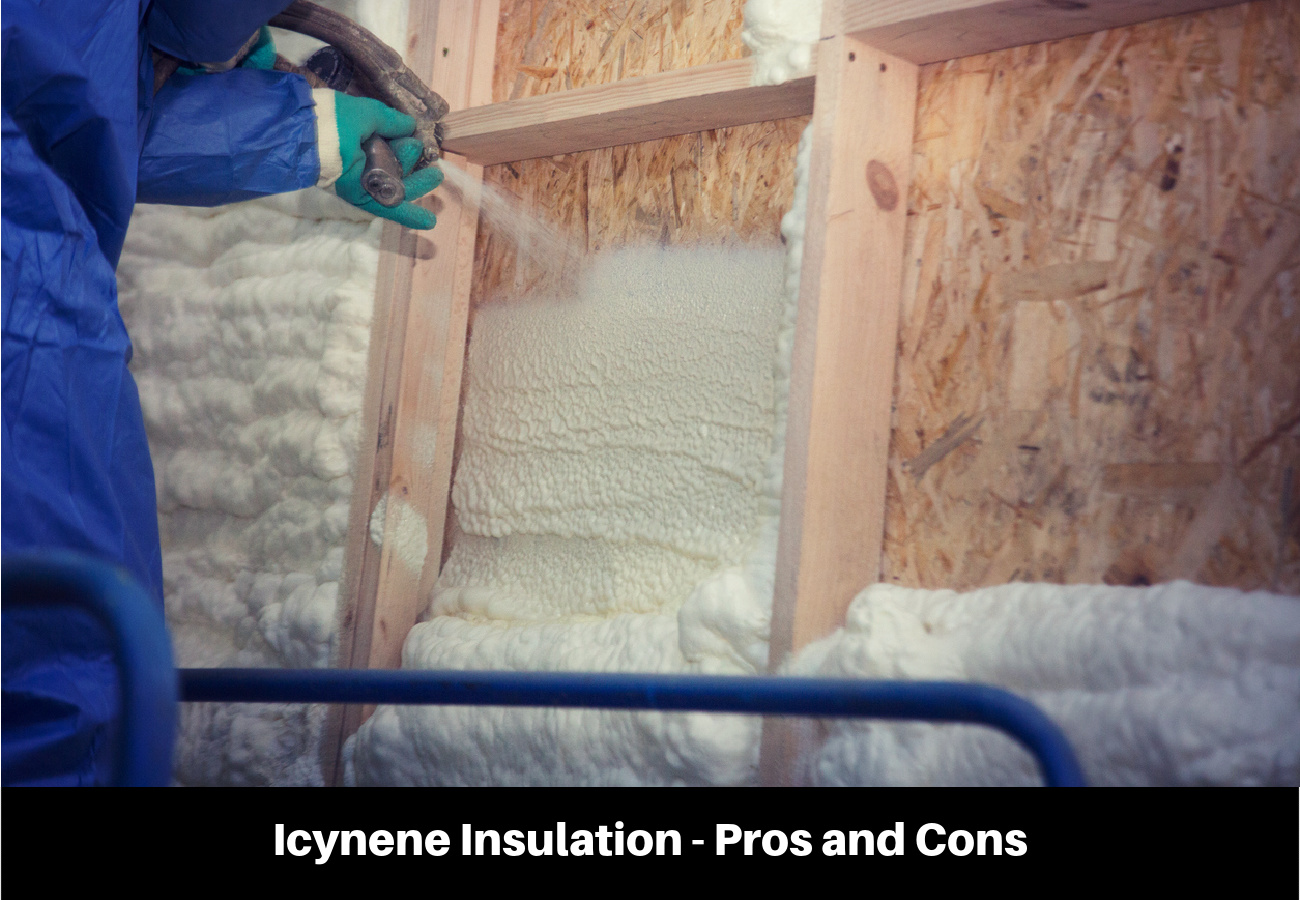Pros and Cons of Icynene Insulation
Icynene is an environmentally friendly open cell spray foam insulation made from water and castor oil. As it expands it encapsulates air which, like most insulation products, is the real insulator.
History of Icynene Spray Foam Insulation
Icynene insulation was developed in Ontario, Canada by a company calling itself Icynene Inc. The year was 1986. They merged with Lapolla Industries in 2017; which was acquired by Huntsman Building Solutions in 2019. Icynene is distributed to over 30 countries including the European Union, Britain, Australia, and North Africa among others.
Icynene Inc. instituted factory training and certification for all installers of their product–a practice ensuring quality insulation application. Installing Icynene is not a DIY project. The product is not available in DIY spray foam insulation kits.
Icynene – Environmentally Friendly
Icynene is formulated from water and castor oil. Castor beans are harvested from fast-growing plants. It contains zero toxic chemicals. Castor oil is completely natural. The finished product contains up to 99% air.
Icynene is a low-density product that is applied in very thin layers. It expands up to 100 times its original thickness. Not only does the expansion fill all cavities, cracks, and gaps; but it also requires less chemical to apply.
Icynene Insulation – Pros and Cons
Spray foam is generally considered the best type of insulation because of its ability to expand into tiny cracks and gaps. Open cell foam like Icynene has a lower R-value than closed cell foam but it expands to many times its size.
Higher expansion rates fill smaller gaps more completely than low expanding closed cell foam. This quality provides a better air barrier and makes up for a lower R-value.
Pros:
Icynene is US patent-protected and one of the leading spray foams in the country.
- R-value. R-3.6 – R-4.0. Better than fiberglass and cellulose. Up to R-22.0 in 2 x 6 walls. Not as good as closed cell foam.
- Air Barrier. Icynene foam is flexible and remains adhered to framing members as they expand and contract–keeping the air barrier intact. Rated as air impermeable by the International Residential Code (IRC).
- Breathable. Icynene open cell foam is breathable–allowing framing members to dry out and preventing rot. (It requires a vapor barrier to prevent house moisture from entering wall and roof cavities and causing moisture buildup.)
- Soundproofing. Icynene is very good at keeping external airborne noise from entering the home. Can also be used on interior walls of entertainment rooms, bedrooms, and home theaters. (Install drywall on one side of the wall and foam the cavities. When cured, install drywall on the other side.)
- Safe. No harmful chemicals, volatile organic Compounds (VOC), or off-gassing. Safe for anyone who is sensitive to odors or suffers from allergies.
- Versatile. Icynene adheres to almost anything. Ideal to use in all types of construction–wood, steel, brick, and concrete among others.
- Environmentally Friendly. Manufactured of renewable crops and water. Water-blown installation.
- Warranty. Lifetime of the building if installed by a certified installer and in accordance with Icynene instructions.
- Fire Retardant. Icynene foam is a fire retardant. It still must be covered with a fireproof product like drywall.
- Mold and Mildew. Mold and mildew will not grow on Icynene.
- Pests. Icynene insulation does not provide a food source for insects or rodents.
Cons:
Icynene foam can present a few problems if not installed properly. Here are a few that homeowners should be aware of.
- Expansion #1. Icynene can be installed in stud cavities that are already drywalled. If done incorrectly, Icynene foam can expand enough to push the drywall off the studs. This type of installation requires an experienced installer.
- Expansion #2. Icynene applied to open stud, rafter, or truss cavities often expands past the face of the framing. It is cut off with a saw and taken to landfills. It may take a few days for Icynene to finish expanding and curing–slowing a project’s progress.
- Ventilation. Installing Icynene insulation throughout a building may seal it so well that an HVAC system is required to provide fresh air.
- Odors. Most Icynene is applied using water as the blowing agent. Occasionally an installer will use a chemical propellant. If not done properly it could leave an unpleasant odor that lasts a few days until it cures. (The odor is not produced by Icynene but by the blowing agent.)
- Moisture. Icynene provides good R-value and air barrier properties but the open cell structure allows water vapor to pass through it. Moisture contacting cold exterior surfaces will cause condensation which will degrade the insulation value. Condensation is also a cause of rot in framing members. (Icynene is a Class III vapor retarder if it is over 4 1/4” thick.) Colder climate applications require a vapor barrier such as 6 mil poly on the warm side of exterior walls.
- DIY. Icynene cannot be installed as a DIY project. The product and equipment are only available to Icynene-certified installers.
- Messy. Installing Icynene can be a messy operation. It sticks to almost everything including floors, windows, clothing, and itself. Make sure the installer takes appropriate precautions.

